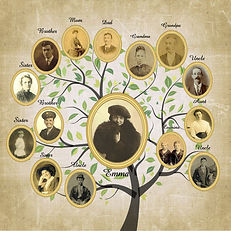Sat., 9/20 Yes, this ends the work. Now the great strike*. Father is in an uneasy position, being president. Took a walk in town with Rose and bought dials. Bought candy and walked all the way home. Learning to walk more since one must pay so much to ride on the zero idea. (*See Appendix F, below).
Sun., 9/21 Did not mail Lena's letter until today. Called at Edith's and then went to church with Kellets. Olive not home yet at 9:30. I rather think she likes to stay away. Olive still at Preston Park on waitress job.
(Appendix F) Steel Strike of 1919 - The Steel Strike of 1919, began on September 21, 1919, shutting down half the steel industry. This was no ordinary strike for terms of employment. It became a fight for the right to freedom of assembly, the First Amendment of the Constitution. Local officials in a variety of offices were interfering and preventing unions and labor groups from gathering together for their meetings, after catching wind of a plan to strike for fair pay and shorter work days. It is all too often easy for wealthy business tycoons to persuade government employees to sabotage the plans of their adversaries, in this case, the skilled and dedicated employees who worked in horrid conditions, twelve-hours a day, risking their lives for years on end. Their blood, sweat, and tears built the business into the world’s first multi-million dollar industry, seemingly enough to bribe as many people as it took to ignore the Bill of Rights. The workers had no choice but to strike. The steel companies retaliated with full force. They influenced public opinion of the striking workers by portraying them as communists, based on the claim that this was validated by their immigrant status. In Pennsylvania, picketers were being clubbed by state police and union leaders were being dragged from their homes and jailed. Hundreds of strikers in Delaware, Pennsylvania and Indiana were arrested and jailed on bogus charges. U.S. Steel (founded in 1901 by J.P. Morgan and Elbert H. Gary), brought in approximately 35,000 unskilled African-American and Mexican workers to replace the strikers. Their company spies then spread rumors that the strike defeated because production was still at 60%, by the hand of the new workforce. (New York Times, November 09, 1919, page 23). These were just some of the tactics used to avoid giving the workers their demands. The strike was officially ended, unsuccessfully, in January 1920.
(Use the Previous & Next buttons below to navigate between the pages).
See the Dickinson page to learn more about Emma's family.
Sign up or log in to save this page to your Site Favorites.


